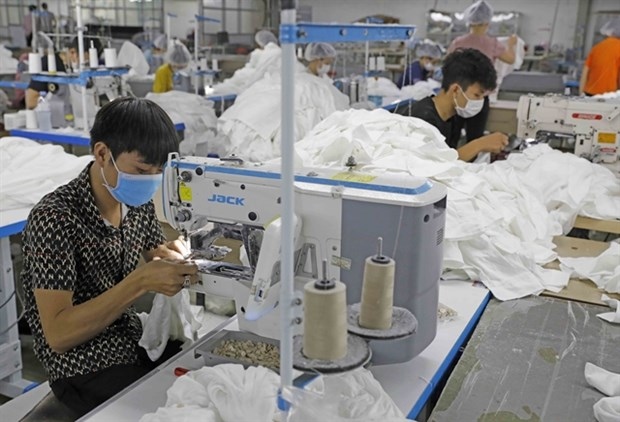Firms urged to make greater efforts to fulfil year-end export target
There remain difficulties for enterprises in the last months of this year, requiring them to be proactive and flexible to finish the year with strong export performance.
Despite posting a positive export turnover over the past ten months with a trade surplus reaching a record level, businesses are still facing market fluctuations while transportation costs have remained very high since the outbreak of the COVID-19 pandemic, trade experts have said.
Than Duc Viet, general director of Garment 10 Company, told baodautu.vn that there had been a decline in orders for the remaining months of 2022 and even the first half of 2023.
Instead of chasing large-scale orders, Garment 10 focused on completing small-scale orders but could earn high turnover as they would not be easy for many firms due to their complexity, Viet said.
According to Cao Huu Hieu, general director of Vietnam National Textile and Garment Group (Vinatex), Vietnam and the world economy were still facing many challenges in the fourth quarter.
Meanwhile, yarn demand and selling prices were still low and many yarn enterprises failed to have orders for November and December.
At the same time, the garment industry encountered more difficulties. Most garment companies saw orders for November and December at about 35-50% lower than their production capacities. The firms had also faced fierce competition in price.
The director suggested that businesses should base on the situation of domestic and foreign markets to implement business programmes and plans for next year.
They should also draw up measures to respond to negative market situations as well as unpredictable fluctuations of the financial market and interest rates, he told baodautu.vn.
As an exporter of food materials, ASIA Group said difficulties in business and production were inevitable at the end of 2022 and 2023. Specifically, the appreciation of the US dollar would have adverse effects on imports and the supply chain would likely be disrupted.
In that context, applying high technology to production would help businesses optimise productivity and improve efficiency, Director of ASIA Group Le Nguyen Doan Duy told baodautu.vn.
The latest report from the General Statistics Office showed that the country's trade surplus reached US$9.4 billion over the past ten months, compared to a modest US$630 million in the same period last year.
The 10-month foreign trade stood at about US$616.24 billion, up 14.1% from the same period last year.
That included US$312.82 billion in exports, rising 15.9%, with US$80.36 billion coming from the domestic sector (up 13.4%) and US$232.46 billion from the foreign-invested sector (up 16.8%).
Thirty-two commodities recorded export revenue of over US$1 billion each during the period, accounting for 92.8% of total overseas shipments. Among them, six brought home over US$10 billion each, making up 64.1%.
Meanwhile, Vietnam imported about US$303.42 billion worth of goods, increasing 12.2% year on year, with the domestic sector accounting for US$105.28 billion (up 12.5%) and the foreign invested sector, US$198.14 billion (up 12%).
Forty-four commodities posted import value of over US$1 billion each, accounting for 93% of the total imports. Four of them saw this figure at over US$10 billion each, accounting for 52.7%, statistics showed.
Between January and October, the US was the largest importer, purchasing some US$93.4 billion worth of Vietnamese goods. China ranked first among exporters when shipping US$100.7 billion worth of goods to Vietnam.
Vietnam is on track to see a trade surplus of US$10 billion this year despite enduring global market uncertainties and fluctuations, Minister of Trade and Industry Nguyen Hong Dien said, adding that this is certainly a spectacular achievement for Vietnam this year.
He attributed these positive results to solutions the Government, ministries, and especially the business community have implemented to stimulate consumption demand and connect product consumption outlets in order to promote trade exchanges.
In the future, priority would be given to promoting exports, strengthening appropriate import management, and ensuring a harmonious and sustainable trade balance beside to promoting official exports in association with industry restructuring, Dien said.

